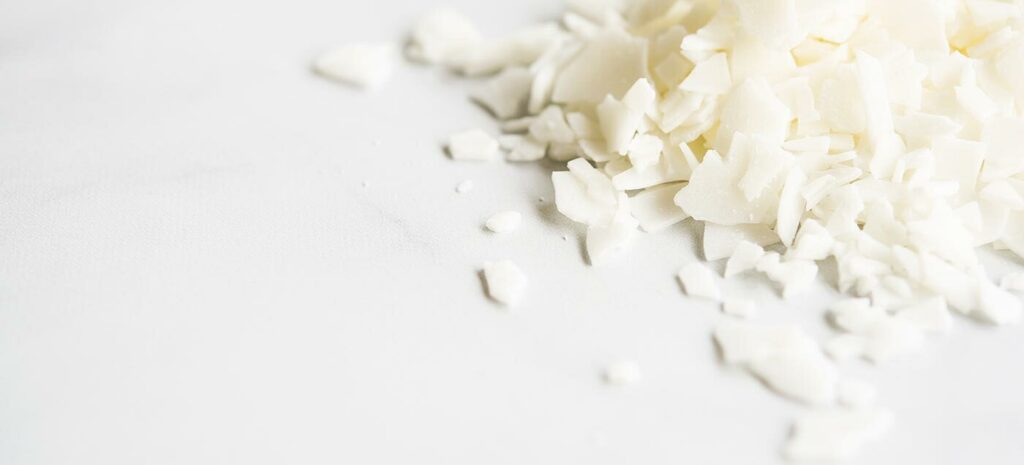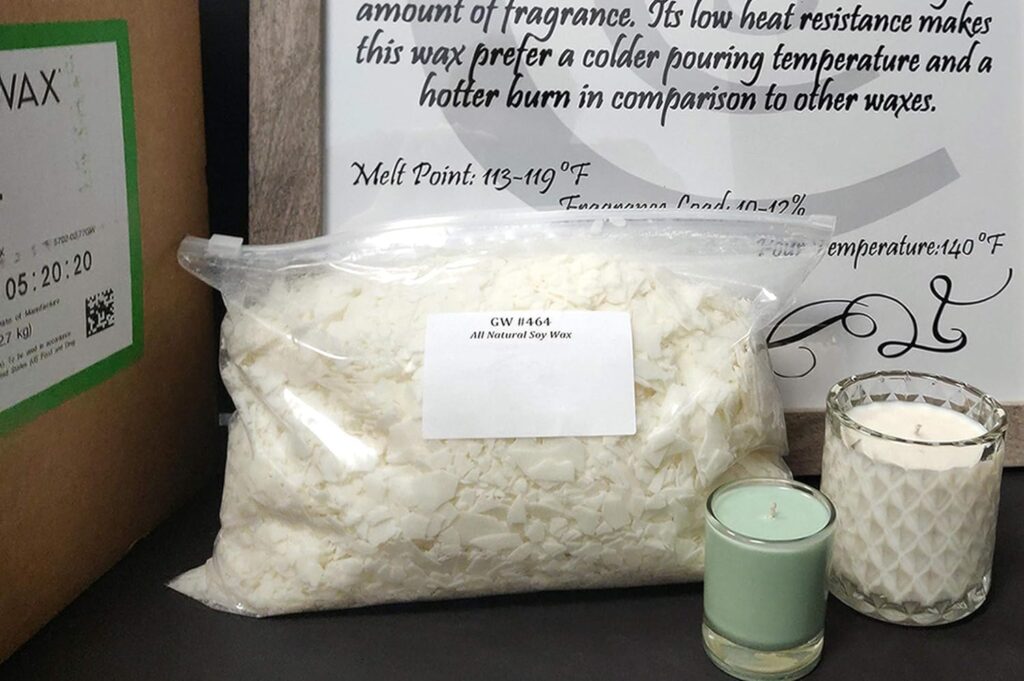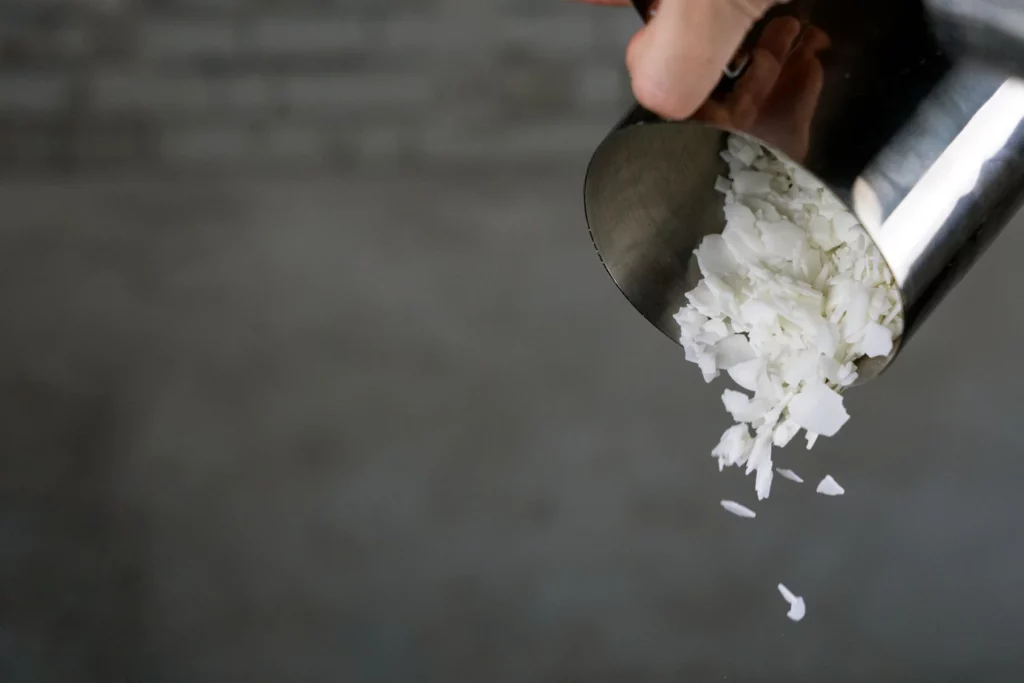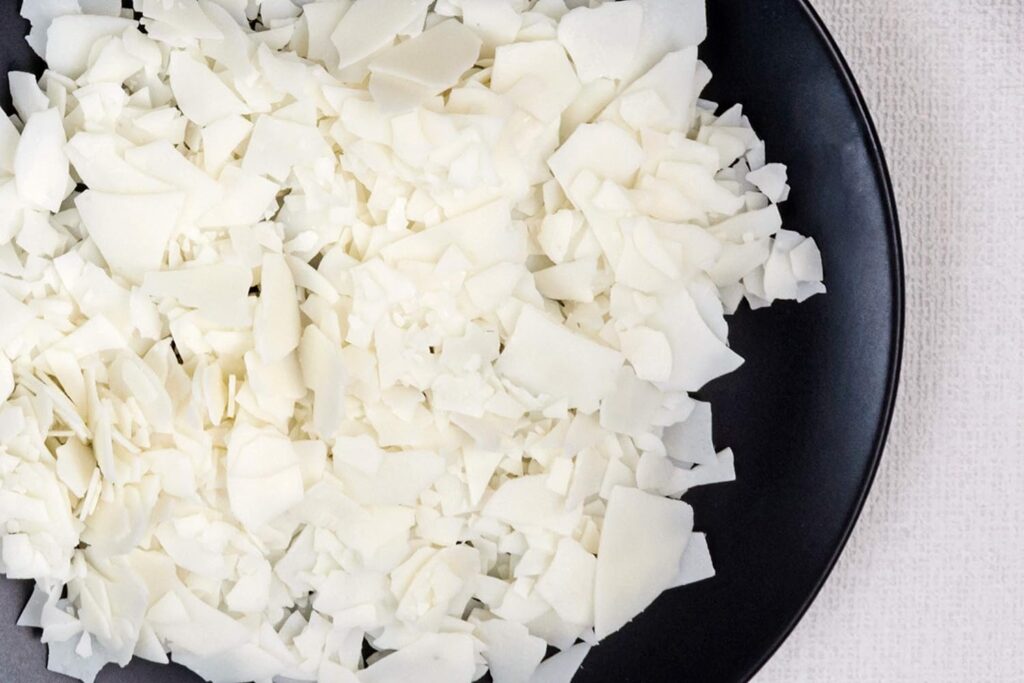Candle making is a popular and rewarding hobby that allows you to create beautiful and fragrant candles for your home or to give as gifts. If you’re a beginner candle maker, it can be overwhelming to choose the right wax for your candles. One type of wax that is commonly used by beginners is 464 wax. In this guide, we’ll discuss everything you need to know about working with 464 wax to create stunning candles.
Understanding 464 Wax
What is 464 Wax?
464 wax is a soy-based wax that is specifically designed for candle making. It is known for its clean and long-lasting burn, making it a favorite among candle makers. This type of wax is also natural and environmentally friendly, as soy wax is derived from soybean oil.
When it comes to the origins of soy wax, it’s interesting to note that it was first created in 1992 as an alternative to paraffin wax, which is derived from petroleum. Soy wax is a renewable resource, as soybeans can be grown and harvested annually, unlike petroleum, which is a finite resource. This makes 464 wax a sustainable choice for environmentally conscious candle makers.

Benefits of Using 464 Wax in Candle Making
There are several benefits to using 464 wax in your candle making endeavors. Firstly, it has a lower melting point compared to other types of wax, which means it is easier to work with. Additionally, 464 wax has excellent fragrance throw, allowing your candles to fill the room with their delightful scent. Lastly, candles made with 464 wax have a smooth and creamy appearance, making them visually appealing.
Another advantage of using 464 wax is its versatility in terms of coloring and scenting. This type of wax can hold a high fragrance load, allowing for strong and long-lasting scents in your candles. Additionally, 464 wax can easily be dyed to create vibrant and custom-colored candles, giving candle makers the creative freedom to experiment with different hues and designs.
How 464 Wax Differs from Other Types of Wax
While there are many types of wax available for candle making, 464 wax stands out for its unique characteristics. Unlike paraffin wax, which is derived from petroleum, 464 wax is made from soybean oil, making it a more sustainable choice. Compared to beeswax, 464 wax is easier to work with and has better scent throw. It is also more affordable than some other types of wax, making it ideal for beginners.
Furthermore, 464 wax is known for its excellent glass adhesion, which means it adheres well to the sides of the container, resulting in a smooth and professional finish for container candles. This quality is particularly beneficial for candle makers looking to create high-quality products that are not only visually appealing but also perform well during burning.
Preparing Your Workspace for Candle Making
Necessary Tools and Equipment
Before you start working with 464 wax, it’s essential to gather all the necessary tools and equipment. Some of the items you’ll need include a double boiler or a wax melter, a thermometer, a heat-resistant container for melting the wax, a wick, fragrance oils or essential oils, and dye or color chips. Having these tools readily available will ensure a smooth and efficient candle making process.
Let’s dive into the details of each tool and equipment you’ll need:
- Double Boiler or Wax Melter: A double boiler is a must-have for melting wax safely. It consists of two pots, one larger than the other, where the smaller pot sits inside the larger one. This setup allows the wax to melt gently and evenly without direct heat.
- Thermometer: A thermometer is essential for monitoring the wax temperature. It ensures that the wax reaches the optimal melting point and prevents overheating, which can affect the quality of your candles.
- Heat-Resistant Container: Choose a container specifically designed for candle making. It should be able to withstand high temperatures without cracking or melting. Glass or metal containers are commonly used for this purpose.
- Wick: The wick is the heart of your candle. It provides the fuel for the flame and determines how well your candle burns. Make sure to choose a wick that is appropriate for the size and type of candle you are making.
- Fragrance Oils or Essential Oils: Adding fragrance to your candles can enhance the ambiance and create a delightful sensory experience. Choose high-quality fragrance oils or essential oils that are specifically formulated for candle making.
- Dye or Color Chips: If you want to add color to your candles, you’ll need dyes or color chips. These come in a variety of shades and can be mixed to create custom colors. Remember to use dyes that are safe for candle making and won’t affect the burning performance.

Safety Precautions When Working with Wax
While candle making can be a fun and enjoyable activity, it is important to prioritize safety. When working with 464 wax, it’s crucial to handle hot wax carefully to avoid burns. Always wear heat-resistant gloves and use a thermometer to monitor the wax temperature. Keep flammable materials away from the heat source and work in a well-ventilated area to prevent the buildup of fumes. By following these safety precautions, you can create candles without any accidents.
Let’s take a closer look at these safety precautions:
- Heat-Resistant Gloves: Protect your hands from burns by wearing heat-resistant gloves. These gloves are designed to withstand high temperatures and provide a barrier between your skin and the hot wax.
- Thermometer: Use a thermometer specifically designed for candle making to monitor the wax temperature. This will help you maintain the ideal temperature range and prevent overheating, which can lead to accidents.
- Flammable Materials: Keep flammable materials, such as paper, fabric, or other combustible items, away from the heat source. This will minimize the risk of fire and ensure a safe working environment.
- Well-Ventilated Area: Work in a well-ventilated area to prevent the buildup of fumes. Wax can release potentially harmful vapors when heated, so it’s important to have proper air circulation. Open windows or use fans to keep the air fresh.
Organizing Your Workspace for Efficiency
A well-organized workspace can greatly improve your candle making experience. Set up your work area in a way that allows easy access to all your tools and materials. Consider using containers or jars to store your wax chips, colorants, and fragrance oils. Label your supplies to prevent confusion and make the process more efficient. By maintaining a neat and organized workspace, you can focus on the joy of candle making without any unnecessary distractions.
Here are some additional tips for organizing your workspace:
- Containers or Jars: Use containers or jars to store your wax chips, colorants, and fragrance oils. This will keep them organized and easily accessible during the candle making process.
- Labeling Supplies: Labeling your supplies can save you time and prevent mix-ups. Use labels or markers to clearly identify the contents of each container or jar.
- Workstation Layout: Arrange your tools and materials in a logical order that suits your workflow. Keep frequently used items within reach to minimize unnecessary movement and maximize efficiency.
- Clean as You Go: Maintain a clean workspace by cleaning up spills and putting away tools or materials after use. This will help you stay organized and prevent accidents caused by clutter.
With these additional details and tips, you’re now well-equipped to create beautiful candles in a safe and organized workspace. Enjoy the process and let your creativity shine!

Step-by-Step Guide to Working with 464 Wax
Melting 464 Wax Properly
Properly melting the 464 wax is crucial for achieving the desired results. Start by filling the double boiler or wax melter with water and placing it on the heat source. Once the water starts to heat up, add the 464 wax to the top pot or container. Stir the wax occasionally to ensure it melts evenly. Use a thermometer to monitor the wax temperature and heat it to the recommended temperature for your specific candle making project. Once the wax has reached the desired temperature, remove it from the heat source.
Adding Fragrance and Color to 464 Wax
Now comes the fun part – adding fragrance and color to your candles. When the melted 464 wax is at the optimal temperature, it’s time to add fragrance oils or essential oils. Measure the recommended amount of fragrance oil for the quantity of wax you’re using and slowly pour it into the melted wax. Stir gently to ensure thorough distribution of the fragrance. If you desire colored candles, add dye or color chips to achieve your desired shade. Remember to mix well to achieve an even color throughout the wax.
Pouring and Setting 464 Wax
With the fragrance and color added, it’s time to pour the wax into your chosen containers. Place your pre-wicked containers on a flat and heat-resistant surface, preferably on a tray or cookie sheet. Slowly pour the melted 464 wax into the container, ensuring that the wick remains centered. Allow the candles to cool and set undisturbed for several hours. During this time, the wax will harden and solidify, resulting in beautifully crafted candles ready for use or gifting.
Troubleshooting Common Issues with 464 Wax
Preventing and Fixing Cracks in 464 Wax Candles
Cracks in candles can be a common issue, but there are steps you can take to prevent and fix them. To prevent cracks, ensure that your containers are preheated before pouring the melted wax. Additionally, avoid exposing the candles to drastic temperature changes. If you do encounter cracks, you can try melting a small amount of additional 464 wax and slowly pour it into the cracks, allowing it to fill and seal them.
Addressing Scent and Color Issues
If you find that your candles are not producing the desired scent throw, you may need to adjust the amount of fragrance oil you’re using. Experiment with varying amounts to find the perfect balance. Similarly, if your colored candles are not turning out as expected, adjust the quantity of dye or color chips to achieve the desired hue. Remember that candle making is as much an art as it is a science, so don’t be afraid to experiment and make adjustments as needed.
Dealing with Uneven Candle Tops
Uneven candle tops can detract from the overall appearance of your candles. To achieve a smooth and even top, consider using a heat gun or hairdryer to gently heat the surface of the candle once it has cooled and set. This will help to melt the wax and level out any uneven areas. Be careful not to overheat the candle, as excessive heat can cause the wax to melt unevenly or distort the shape of the candle.
Working with 464 wax can be a wonderful experience for beginner candle makers. Its ease of use and excellent performance make it a top choice for creating beautiful candles. By understanding the properties of 464 wax, preparing your workspace properly, and following a step-by-step guide, you can confidently create stunning candles that will enhance any space. Remember to troubleshoot any issues you may encounter and enjoy the process of creating your unique candle creations.
More to read: Where to Buy Bulk Candle Wax for Large-Scale Production

